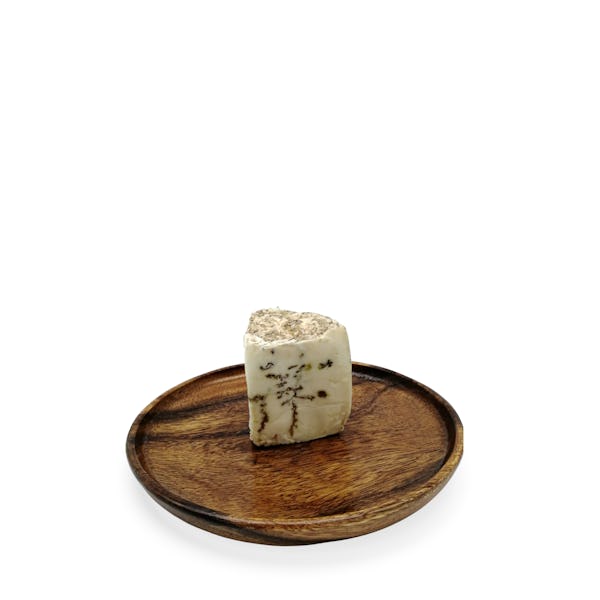


TASTING NOTES FROM THE CURATOR
A strong-smelling cheese, giving off notes of earthy mushrooms, the Davao Blue Goat cheese is pasteurized and soured with a cheese starter. Aged and dried for 30-45 days, blue mold starts to develop in the cheese. This blue mold is what gives it its aroma, and also what gives it its soft, smooth, and creamy texture.
PREPARATION AND PAIRINGS
This Davao cheese shines so brightly when prepared on a cheese plate and paired with various foods. Try some honey, sliced pear, or walnuts.
Crumble it up, and top your salads with it. Or make a dip! Mix your blue mold cheese with some diced red onions, diced pears, cream cheese, sour cream, and honey. Serve with some hard crackers!
Or how about melting it on top your burger? Or take your pastas to the next level!
This cheese also pairs wonderfully with some aromatic white wines. Try this one from Sileni Estates.
OOPS!
The history of blue cheese comes from a legend that wouldn’t take much to believe. It was said that in the 7th century, in a cave outside Roquefort in France, a shepherd got distracted and forgot his lunch of bread and cheese. Returning after a few months, he found the cheese had been infested with penicillium, a mold growing in the cave. To this day, it’s penicillium that gives this goat milk cheese its blue mold.
Storage Instructions
Cheeses (except brined ones in jars) should be stored in the crisper or the butter drawer of a refrigerator, not on the shelves themselves. This is to help regulate their temperature and humidity levels—and prevents the formation of mold. Once opened, they should not be kept in their original packaging. Soft cheeses with delicate rinds need to breathe, so they are best placed in glass containers lined with paper towels to absorb extra moisture. Leave the lid open a tiny bit for air to circulate and don’t forget to write up a label with the date you first opened the package. Kindly pay attention to the best before date label when you receive your cheese. Consume prior to date indicated.



